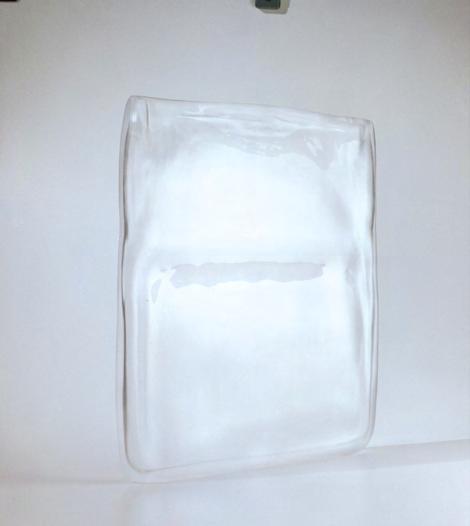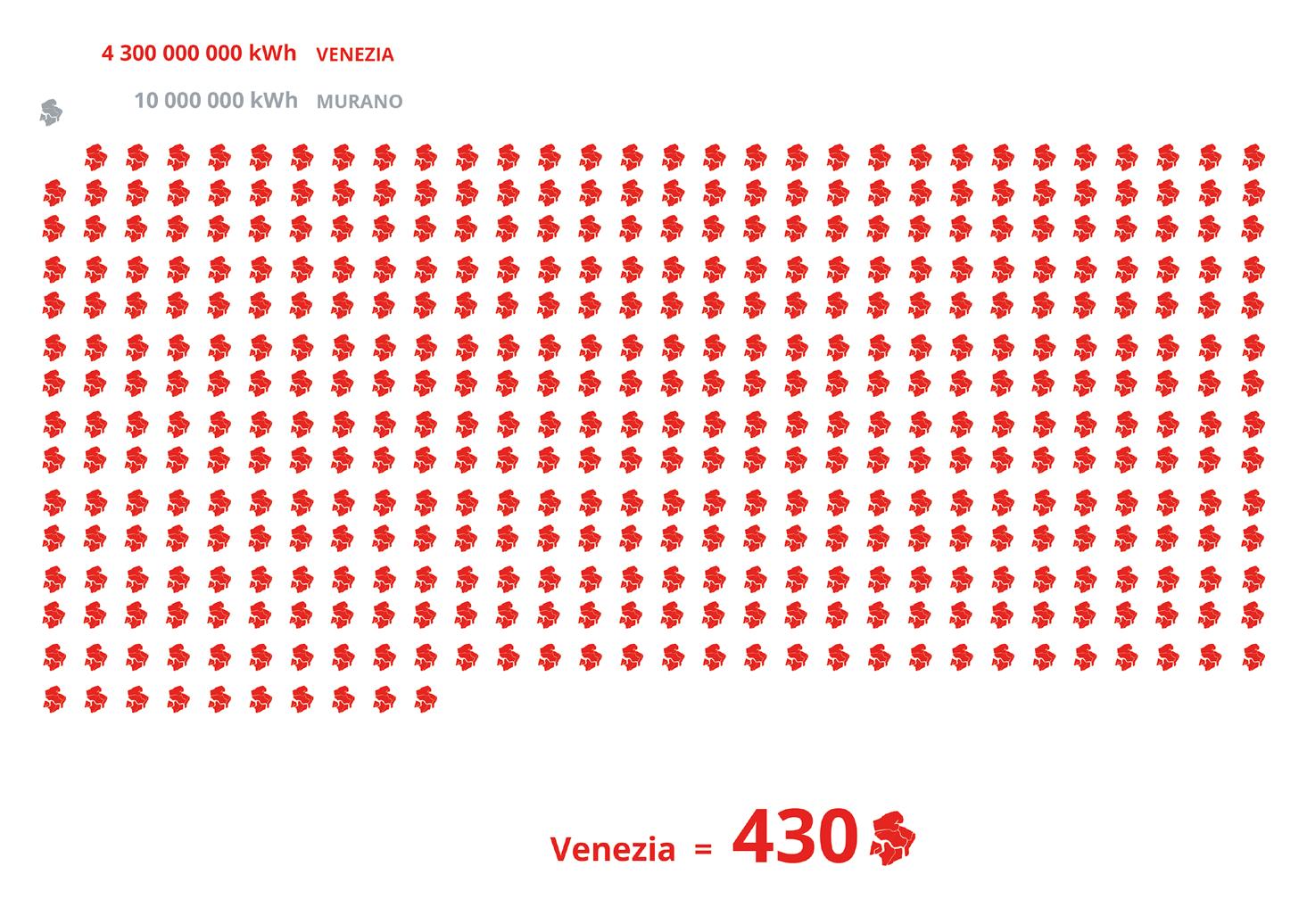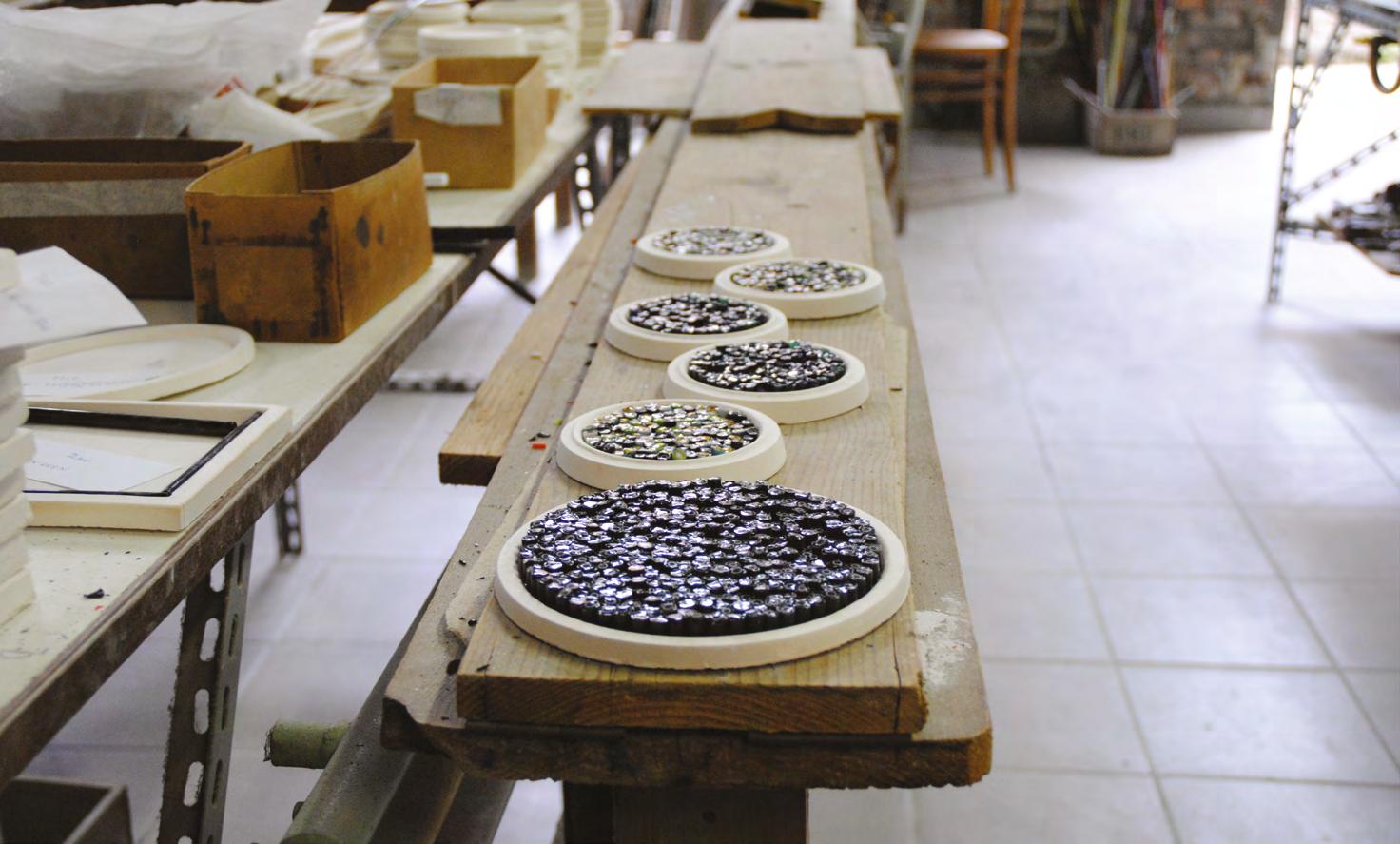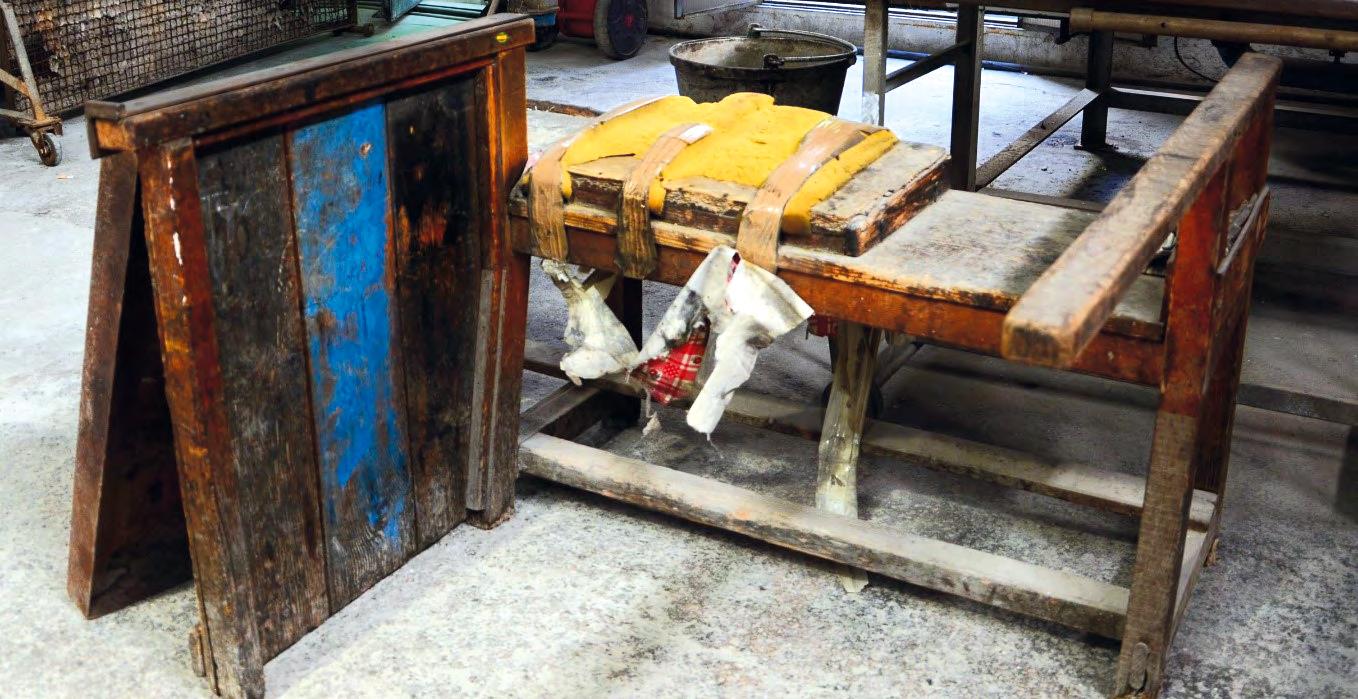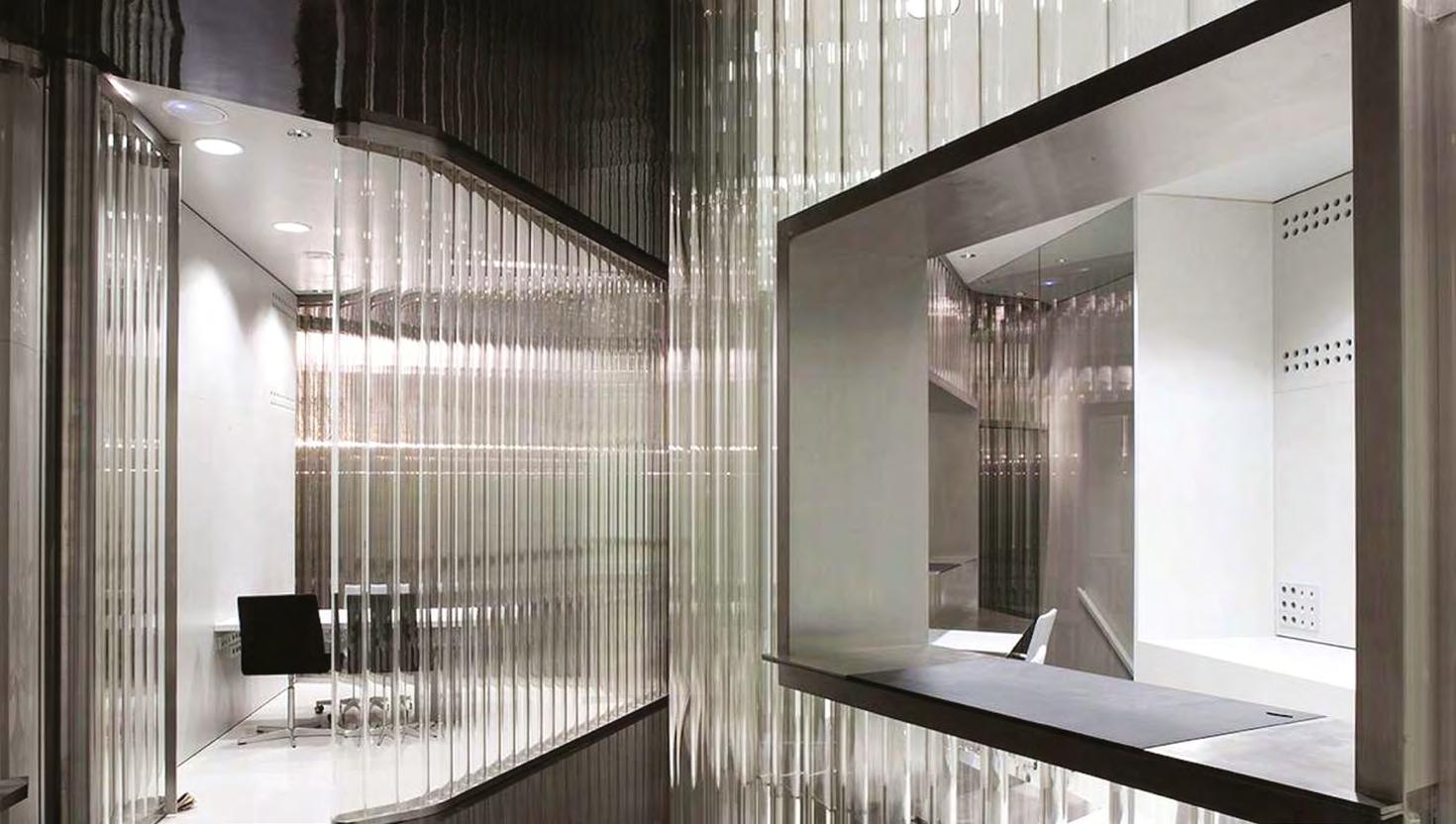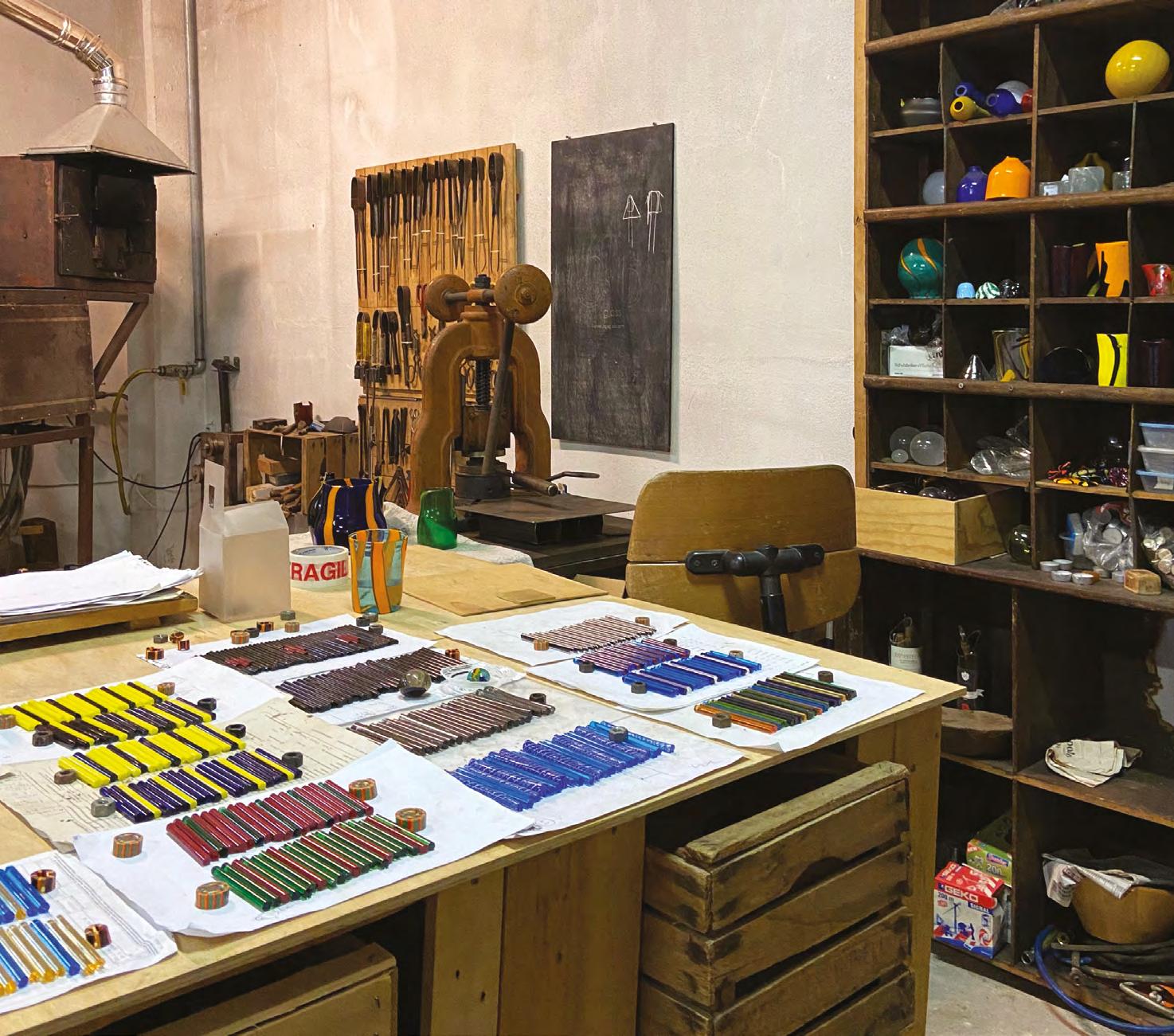
6 minute read
Glass and Science
ELTI CATTARUZZA
Glass is an extraordinarily distinctive material. Its uniqueness is recognised by ordinary people, who value its colour and luminosity in everyday objects such as glassware and in the most sought-after items such as glass beads (included on the UNESCO List of the Intangible Cultural Heritage of Humanity since 2020), but also by scientists who understand and explore its innermost patterns of behaviour, discovering that it flouts the usual rules that other common materials, such as metals, follow. Glass is in the transparent cup we can use to drink a fantastic vintage red wine, capable of making us fly over Mount Parnassus... but that cup is made of a material with devilish properties. A material considered fragile? This is just a small aspect of its existence. That same material can make our daily lives better, thanks to its features explored in smart windows, in optical fibres, in the flexible glass of some now commonly used devices, and in bioglass, which are bioactive glass materials that are capable of stimulating bone regeneration... This is why we prefer to think of it – in a way that is more inclusive of all its distinctive features – as an antifragile, enduring material that persists, undaunted, in remaining mysterious, complex, multifaceted, elusive and perennial. Its properties are never hic et nunc, because they depend on its history, on the chronology of the thermal processes that led it to become an object, on the atmospheres it went through in its creative labour. And will the form it has now taken really be the final one, for a material that can always prove to be as divine as it is infernal? Or is it just our desire as humans to demand it to be eternal, static, as if it were a cornerstone of our ability to conquer matter? Glass can often provide answers, but above all it raises endless questions that transcend science by meeting art, that go beyond mere utility by enchanting and rousing the senses. It is no coincidence that the poet Wisłava Szymborska, winner of the Nobel Prize for Literature in 1996, once wrote about a man who “built himself a glass violin because he wanted to see the music”.
The history of glass is a continuous crossing of boundaries between magic and science, utility and art, transparency and colour. In a famous scientific article published in 2016, entitled Welcome to the Glass Age, two famous researchers floated the idea of declaring the current century the Age of Glass. We can hardly blame them, if we consider that in recent years some 7,000 scientific articles containing the word glass are published every year, and more than 25,000 a year on the topic of glass. Moreover, it is not surprising that the United Nations decided to celebrate this material by declaring 2022 the International Year of Glass. And just to recall a historical fact, it was right here in Venice that the great scientist Galileo Galilei was invited on 25 August 1609 to present to the Doge and the Venetian aristocrats a new instrument that he had perfected as no one had ever been able to do before. It was an instrument containing glass lenses whose creation he himself had patiently and skilfully overseen at every stage, from the search for optimal transparency of the material to the perfection of the curvature of the surfaces, which he polished with his own hands, cooperating on all these aspects with the master glassmakers of the island of Murano. We are talking about the telescope – an ancient example of how glass allows us to “see far”.
Staying on the subject of devilishness, the great Wolfgang Pauli, Nobel Prize winner for Physics in 1945, once said that “the surfaces were invented by the devil”. Thinking about the surface of a solid, the atoms that compose it are the boundary between one world and another, a door to be passed through to access new possibilities, the development of physical and chemical rules that are amplified in the ambiguity of the boundary atoms. Similarly in the case of glass, such as the most widely used type of glass (sodium-calciumsilicate glass), which is used in a variety of applications such as materials for screens, pharmaceutical containers, photovoltaic systems and so on, it is important to have investigation techniques that enable the study and analysis of its surface, allowing light to be shed on highly complex phenomena relating to the reactivity between its surface atoms and those of the surrounding environment. These interactions can lead to alterations in surface chemistry and structure, internal structural connectivity, the ratio of bridging and non-bridging oxygen, corrosion resistance, leaching of modifier elements, adsorption, wetting and hydrophobicity. The use of appropriate analysis techniques, capable of investigating the boundary atoms between the solid and the surrounding environment (techniques with sampling depths that can vary from a few atomic layers up to several microns), allows us to understand the condition of the glass surface, thus making it possible to plan conservation or protective treatments and to verify their actual effectiveness over time. This applies, for example, to artistic glass for the purpose of studying and preventing/slowing down its degradation, or to glass that comes into contact with liquid solutions (such as in the pharmaceutical field, food industry, etc.) with regard to the potential release of atoms into the solution.
Glass has countless lives, because it is a highly recyclable and reusable material. Europe is aiming to reach a glass recycling rate of 75% by 2030. Italy has already surpassed this target ahead of schedule, reaching a glass recycling rate of 79% in 2020. But the many facets of glass – its antifragility – enable it to be easily and almost directly reused even as an additive material in many areas of the building industry, or even to become the centrepiece of objects of design if the scraps come from highly distinctive and unique manufacturers, such as the Murano glassworks. Here, even scraps – not remelted but transformed into new objects – retain the history and beauty of the places and artefacts from which they originate, transmit the poetry and wisdom of centuries of craftsmanship and knowledge handed down through the generations. These distinctive features should not be lost, neither on the scraps nor on the originals, but rather safeguarded and protected. Recycling, repurposing, reusing: these words should have increasing resonance in the case of glass too, given that the manufacture of an object from scratch – i.e. produced from the usual raw materials, including silica sand – requires approximately three times as much energy as that produced by recycling glass fragments and powder. The simple initial melting of silica sand, due to the high temperature required, consumes about 25% more energy than the melting of preformed glass... It is needless yet self-evident to emphasise today, in the current geopolitical situation, the importance of energy savings in the various stages of the production of a material. In 2017, so quite some time ago now, a scientific article entitled “Venice artistic glass: Linking art, chemistry and environment – A comprehensive emergy analysis”, which featured an “emergy” analysis of the annual production of artistic glass by an averagesized Murano glassworks (an analysis that quantitatively considers and evaluates both the economic and environmental aspects of the entire process of making the glass artefact), highlighted how dangerously dependent its overall economy was on traditional energy sources, for which economic and social factors are extremely critical and cannot be controlled from within the system. Ipse dixit? Unfortunately, reality. Even for glass, therefore, we need education geared towards fully enhancing and understanding it in a broader sense, so as to embrace the concept of synergy between aesthetic possibilities and functional opportunities. Cross-pollinating, reinterpreting, experimenting: glass science and industrial technology that confronts and merges with the manual art of those who know how to make unique artefacts, with a view to innovation that must not disregard the preservation of ancient craftsmanship, making each approach increasingly sustainable and suited to a society in a constant state of flux. This, perhaps, is the new paradigm of glass.
16

